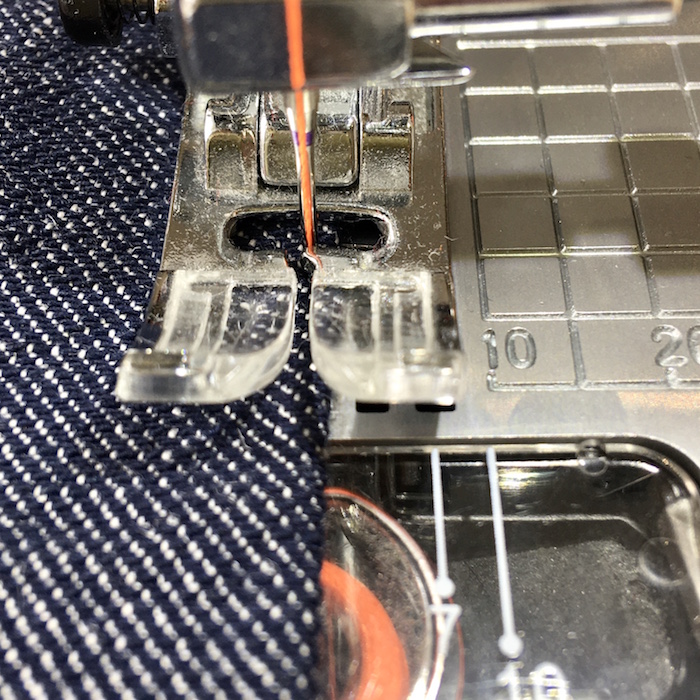

One of my favourite details of The Simone Camisole is the lovely gently shaped hem.
A shaped or curved hem doesn’t really like having a big hem allowance, it’ll look twisted and ‘ropey’ so a narrow hem is the best option. They can be tricky to finish neatly if you are working with a delicate or lightweight fabric, which is often the fabric of choice for a camisole. Different fabrics can require different construction methods so it’s always nice to have a little arsenal of alternative methods in your tool box should the need arise.
If you are ever in doubt of the best method to use just do a little test on a scrap of fabric. If you are testing the best way to hem a curve, remember to do your testing on a similar shape.
| Sewing a Narrow Curved Hem |
WS | wrong side of fabric RS | right side of fabric SA | seam allowance
TIPS |
- Press at every step.
- If you have a ‘bouncy’ fabric that doesn’t hold the press line (like the one I used!) use a few pins to help, but first check they don’t damage your delicate fabrics.
- If you carefully tack your hem in place along the top edge of the hem allowance, it will give you a guide to follow when you stitch the hem from the RS, ensuring you catch all the allowance.
- A good final press and steam will shrink any stretching that may have happened on the curved areas.
- For reference: the fabric I have used for this post is a fine, slippery, (allegedly) silk crepe de chine that was lurking in the stash.
Double Turn Hem | 1cm Hem Allowance
This is my usual method and the one that you will find in The Simone Maker Instructions. The benefits are it’s easy and works for most fabrics. It gives a small, neat hem with all the raw edges enclosed.

- Machine a row of stitching 5mm from the raw edge all the way around the hem

- With WS up, press up the raw edge of the hem using the stitch line as a guide.
- The stitch line should roll to the WS. (I’ve held the hem in place with a pin for the photo).
- Fold again and press, enclosing the raw edge
- Stitch the hem, being careful to catch all the hem allowance. (You can see, above, I have partially stitched the hem).

We have a tutorial for the Maria Apron Hem HERE – it’s the same principal but there are a few more photos.
Overlock and Turn |
An overlocker (a serger) makes the edge easier to fold neatly, especially if you are double turning the hem. If you don’t have an overlocker you could experiment and see how it looks with your neatening stitch on your usual machine. You can adjust the differential feed of your overlocker on curved hems so the fabric gathers slightly and this will help when you turn up the hem, but I didn’t find it necessary for The Simone pattern in this fabric.
Single turn | The first example is turned once so you can see the overlocking to the WS

- Overlock the edge of the hem
- Fold and press the hem the width of the overlocking to WS. Once you’ve done this a few times you may be comfortable to just fold and stitch in one go.
- Stitch hem
Double turn | This example is turned twice so the overlocking is enclosed, giving a slightly more expensive looking finish.

- Overlock the edge of the hem.
- Fold and press the hem the width of the overlocking to WS and stitch.
- Fold again and stitch on top of your first row, keep folding as you stitch.

- Again, once you have done this a few times, and are comfortable with the method, it is possible to double fold and stitch in one go.
Traditional Narrow Rolled Hem Method |
This is the usual rolled hem tutorial you’ll often come across. I usually use the first method I listed above because I’m not a huge fan of trimming SA (that’s most likely due to my industry training as it’s not a thing we would have done and I’m a bit lazy if I’m honest), but the benefits of this method is you can make a very narrow hem on trickier lightweight, sheer or slippery fabrics. It would be your go-to method if you ever needed to hem a beautiful floaty circle skirt.

- 1.5cm Total Hem Allowance
- Stitch 1cm from raw edge of hem. (yellow stitching)

- Use the stitch line as guide and press up the raw edge of the hem to the WS, the stitch line will be close but not right on the folded edge.

- Stitch as close as you can to the folded edge and through all layers and on top of the first row of stitching. Press. (green stitching)
- Trim away the extra hem allowance as close as you can to the stitch line.

- Turn the hem again, so all raw edges enclosed and stitch. (blue stitching).
- Voila! The tiniest tiny, neatest hem!
You can of course use a special rolled hem foot, but I don’t own one so you are on your own if you go down that route!

























